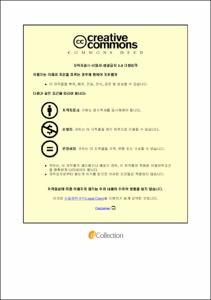폴더블 키보드용 FSR잉크의 개발
- Alternative Title
- Development of FSR Ink for foldable keyboards
- Abstract
- Miniaturization and increase on penetration rate of Smart Device replaced the role of computer or laptop that people use smart phone or tablet instead. However, there are limits on performance for tablet and smart phone, which are emphasized on portability, to conduct; lack of accuracy and speed of virtual keyboard. Consequently, more and more people use Bluetooth keyboard as an alternative. PCB etching method is utilized to product Bluetooth keyboard at the moment, but this method consumes more time and money compare to printing method. Especially, copper etching produce massive amount of pollutant that cause difficulties on waste management. With the reasons above, PCB manufacture utilized printed electronics technology is highly prominent in the industry.
When applying printed electronics technology on the production process, cleaner production and simplification of the process are plausible that bring the cost down. For example, there are more than 8 processes to form a gate electrode on TFT (thin film transistor) production and 40 or more process to produce one TFT. When we apply printed electronics technology, there are only 4 processes for it, 10 times fewer.
We conducted this study as categorizing types of resin and content of resin of carbon paste for FSR(Force Sensing Resistor) sensor that utilized screen print method on production. We utilized two different types of resin and selected 2 resins with different molecular weight for each kind. We aimed for carbon paste with high adhesive strength and hardness and steady conductivity. We drew that paste with 10,000∼30,000 cps on viscosity, adhesive strength that would not be removable on cross-cutting test, over 3H on hardness, and 18.0~27.0 Ω⋅㎝ on conductivity are most appropriate. Based on this, we tried to find best resin and the content. Epoxy resin FPE-50, bisphenol A polymer, are selected as the most suitable candidate through the first test, comparison on type of resin, and the most suitable content are confirmed as 21.51% via the second test, comparison on content of resin.
- Issued Date
- 2017
- Awarded Date
- 2017. 2
- Type
- Dissertation
- Publisher
- 부경대학교 대학원
- Affiliation
- 부경대학교 대학원
- Department
- 대학원 인쇄공학과
- Advisor
- 남수용
- Table Of Contents
- Ⅰ. 서론 1
Ⅱ. 이론 3
1. FSR 센서 3
2. 전도성 카본 블랙 4
3. 레올로지 4
가. 점도 4
나. 점탄성 6
다. 요변성(Thixotropy) 8
Ⅲ. 실험 10
1. 실험방법 10
가. 카본페이스트의 구성 10
(1) 카본 블랙 분말 10
(2) 수지 10
(3) 용제 11
나. 페이스트의 제조 12
다. 포뮬레이션의 선정 13
라. 스크린 인쇄 및 건조 14
2. 측정방법 15
가. 페이스트의 레올로지 측정 15
나. 인쇄패턴의 접착력 측정 16
다. 인쇄패턴의 연필경도 측정 17
라. 인쇄패턴의 비저항 측정 17
마. FSR센서의 출력값 측정 18
Ⅳ. 결과 및 고찰 20
1. 수지의 선정 실험 결과 20
가. 수지의 종류에 따른 레올로지 측정 20
나. 수지의 종류에 따른 접착력 측정 23
다. 수지의 종류에 따른 연필경도 측정 24
라. 수지의 종류에 따른 비저항 측정 25
마. 압력의 변화에 따른 출력값의 변화 측정 26
2. 수지의 함유량 선정 실험 결과 27
가. 수지의 함유량에 따른 레올로지 측정 27
나. 수지의 함유량에 따른 접착력 측정 30
다. 수지의 함유량에 따른 연필경도 측정 30
라. 수지의 함유량에 따른 비저항 측정 31
마. 압력의 변화에 따른 출력 값의 변화 측정 31
Ⅴ. 결 론 35
참고문헌 37
- Degree
- Master
- Files in This Item:
-
-
Download
 폴더블 키보드용 FSR잉크의 개발.pdf
기타 데이터 / 1.17 MB / Adobe PDF
폴더블 키보드용 FSR잉크의 개발.pdf
기타 데이터 / 1.17 MB / Adobe PDF
-
Items in Repository are protected by copyright, with all rights reserved, unless otherwise indicated.